Okay, I was warned off of this one. A local friend had given it a try and sent me a tweet telling me to stay away. He saw it was on my “to try” map, and had gone himself, and said that while they had a beautiful terrace (wait, a terrace, in this location? So, I’d back-burnered it. and not really thought about it. But I found myself a block away from the place one day recently, and thought… “how bad can it be?” And yes, I do realize that those could be famous last words.
So, the place, Chung, Ruperto Godoy 731, Floresta [w3w: bubbles.sympathy.then], is down a little one block alley that doesn’t look like one should be walking through there, and that is currently being torn up by the city to re-pave, or something. Thankfully, whatever they’re doing, hasn’t shutdown the place. And, right next door there’s a brand new Korean fried chicken place, and a couple of doors down, a cafe with Korean pastries. There’s a craft beer bar with “gourmet snacks” almost across the street. A new sushi bar at one end, and a shabu-shabu spot and Japanese bar at the other. Hmmm… this is turning into a little gastronomy street. But of course, it could be awful, as I was warned.
Not at all what I expected – it is a hole in the wall, but it’s freshly painted, the tables and chairs are relatively new, there’s both a downstairs and upstairs dining room, plus the terrace, and the staff, including the kitchen staff, seem to be a mix of Korean, Chinese, and Argentine. The food on offer is Korean-Chinese, much like the menu at Castellum, just a few blocks away, and a cuisine I don’t know much about.
Korean Chinese cuisine (Junghwa yori) is a hybrid cuisine developed by the ethnic Chinese and the ethnic Koreans in South Korea. Derived from Chinese cuisine, Korean Chinese cuisine consists of unique dishes with Korean flavors and ingredients.
The cuisine was first developed during the 19th century in the port city of Incheon, where most of the ethnic Chinese population of Korea lived. Due to geographic proximity and the demographics of the Korean Chinese population, most Korean Chinese dishes are derived from (or influenced by) northern, eastern and northeastern Chinese dishes from Beijing and Shandong.
Chinese restaurants in Korea are unusual in that most are owned and operated by Koreans, rather than ethnic Chinese. This was because the assimilation of the ethnic Chinese into Korean culture and their emigration due to legal discrimination, particularly under the Park Chung-hee administration. Consequently, the most authentic Korean Chinese cuisine may be found in overseas Korean communities. [Excerpted from Wikipedia entry]
I order up the gun-mandu, fried dumplings. At a glance, they’re more like mini-empanadas than what I think of as either Chinese or Korean dumplings (a bit of online research shows that this is the classic form for these), but they’re fried to a beautiful golden brown, and they’re filled with a deliciously spiced pork mix. I have the usual soy – vinegar – chili flakes to mix up a dipping sauce. I’m happy. 180 pesos for 10. This isn’t bad, though I like the dumplings at Castellum better.
One of my favorite dishes of this type of cooking is jajangmyeon (or, chachangmion as they have it on the menu here) – warm noodles with a black bean, pork, and onion sauce that you mix to your own tastes. And, they offer two versions of it here, the classic, and also the meun chachang, the spicy version of the same. And, it comes out exactly as advertised, and the spice level is up there, just where I like it (and, I also like that they asked how spicy I wanted it). And, it’s dead-on, in fact, one of the better jajangmyeons I’ve had, and easily the best one I’ve had here in BA. And for 220 pesos, it’s almost more than I can finish… though I did eat the entire plate of dumplings beforehand, so my bad.
I like the space, service was attentive and friendly, the food, excellent. My colleague, my friend, must have hit either a particular dish that wasn’t good, or a bad day on their part. I put this into rotation for the next week’s Horde lunch. Seven of us turn out for the day.
We order up a couple of plates of the dumplings – it’s really the only appetizer type dish on the menu of 24 dishes. And it quickly turns out, disappointingly, that almost half the menu simply isn’t available at lunchtime, they only serve it at dinner. This swiftly eliminates a good percentage of what we want to try. At lunch, they basically offer the simplest dishes – the sweet and sour, the quick noodle dishes, the fried rice. None of the stir fries are available, and the only seafood dishes out of 10, are shrimp fried rice and a bowl of spicy noodle and shellfish soup.
One person gets the black bean noodles that I’d had. We end up with two orders of sweet and sour chicken, one of sweet and sour pork (which bizarrely, doesn’t come coated with the sauce, but has it on the side to dip into), two shrimp fried rice (which in the Korean adaptation comes with a side of black bean sauce), and one bowl of the seafood soup.
Look, they were all good. Well, the pork one was a bit bland – the sauce was somehow different from the sauce used on the chicken, definitely missing some flavor – and it’s the first time I’ve encountered sweet and sour chicken served the traditional Korean way, with the sauce on the side as a dip. No question the best dishes were the black bean noodles and the spicy seafood noodle soup. They were short a cook for the day, so food took a long time to get to us, and came out one plate at a time – a couple of us were finished before a couple of others had even gotten their plates.
It was good enough that I’d consider going back in the evening some time to try what look like far more interesting dishes. But again, really disappointing that they don’t have them at lunch – they’re open straight through the afternoon, so one has to assume they have the ingredients on hand, they’ve just simply decided they won’t cook certain ones until later in the day.
All told, with drinks and tip, we leave for 420 pesos ($11) apiece, a little less than I spent solo, but then, we shared the dumplings. Recommended, especially for something different.
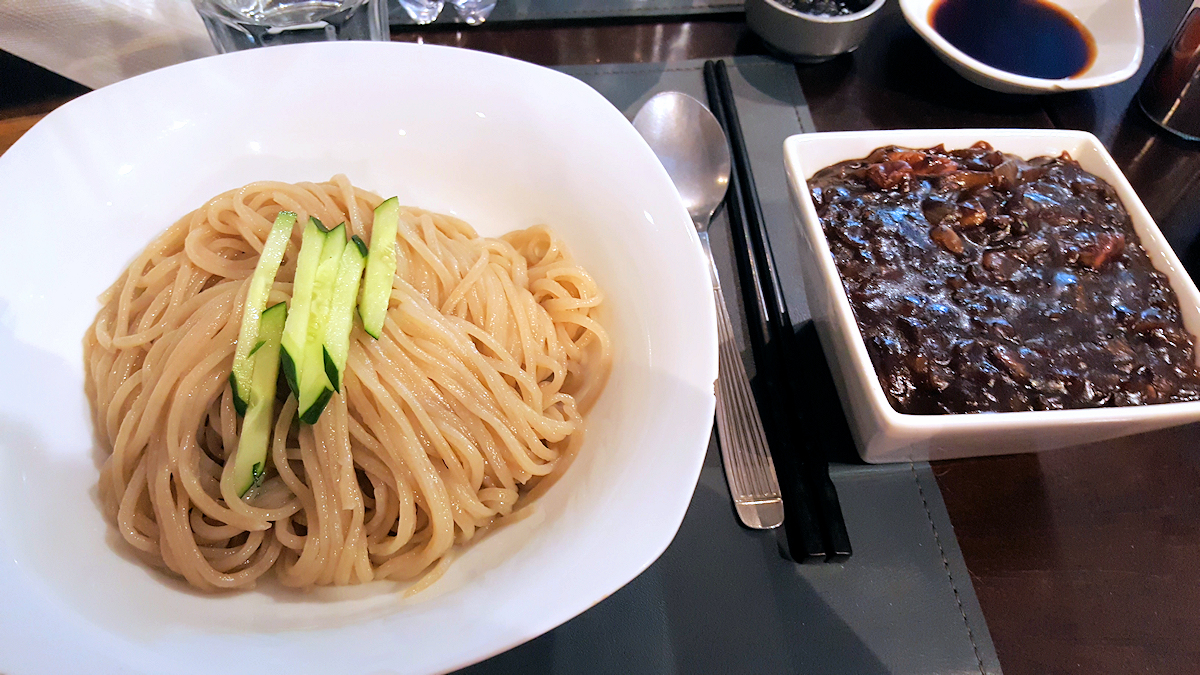
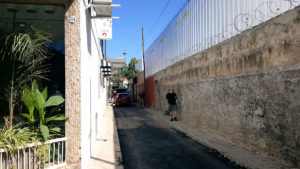
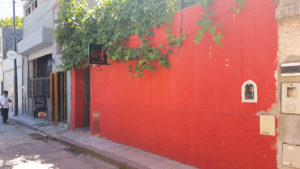
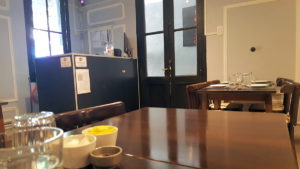
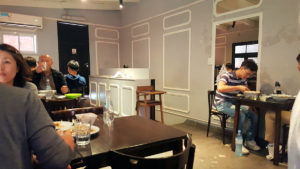
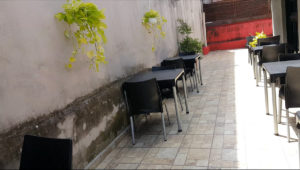
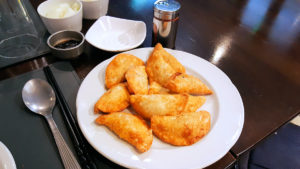
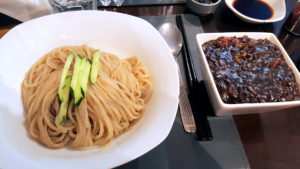
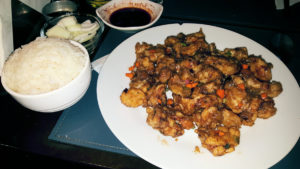
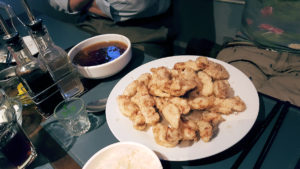
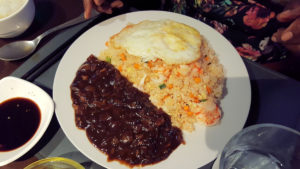
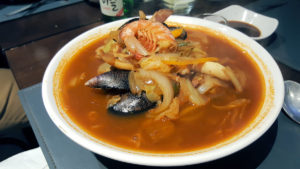
[…] on this new little gastronomic alleyway, right next to Chung, the Korean-Chinese spot which I reviewed recently, no surprise, this place specializes in chicken. Specifically, Korean fried chicken, in several […]
[…] Ruperto Godoy. Now populated by a cafe, two bars, a shabu-shabu bar, a Korean fried chicken place, a Chinese-Korean jungwha yori spot, a fancy looking sushi bar, and now, a spot for traditional Korean cooking that […]
[…] talked a bit before about junghwa yori, or Korean-Chinese fusion cuisine, and presented a little excerpt from Wikipedia a while back on how it all came about, in a nutshell. One of my favorite dishes of the genre, and […]
[…] One of my favorite junghwa yori dishes (Korean-Chinese fusion, you can see the story of that on my original writeup for this place) is jajangmyeon, or spicy black bean noodles. It was as good, and as spicy, as previous visits, […]
[…] known as Jungwha-yori cooking, and did a bit of a dive into the biggest proponent of the genre, Chung, in Floresta. Closed up during the pandemic, the space, without, as best I can tell, any aesthetic […]